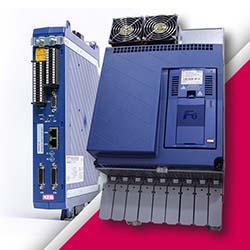Carbon Offsetting for Manufacturing Facilities
The world of manufacturing is vast, complex, and utterly essential for modern living. It’s also a considerable source of carbon emissions. Given the advanced state of anthropogenic climate change and widespread awareness of its human impact, it’s time for manufacturing to adopt carbon offsetting practices.
Here’s a look at the various forms offsetting can take in manufacturing and why it’s so essential right now.
Manufacturing’s Impact on Global Emissions
When you break it down by category, you come to two conclusions about manufacturing’s impact on global carbon emissions: the scope of the impact and the variety of sources from which it manifests.
There are, after all, many different types of manufacturing and endless kinds of workflows within each one. Global manufacturing sectors broken down by emissions look something like following, with each value representing a fraction of the total global output of greenhouse gases (GHGs):
- General energy use in industry: Includes activities associated with iron and steel fabrication, foodstuffs, tobacco, paper and pulp, machinery, and others: 24.2%
- Transportation: Including road transport for manufactured goods, aviation, oceangoing freight, rail, and pipelines: 16.2%
- Energy used by buildings: Residential heating, cooking, and lighting sits at 10.9% of total GHG emissions; commercial locations contribute 6.6%.
- Direct industrial activities: Includes cement production as well as petrochemicals and chemicals: 5.2%
This is not a comprehensive list. Also significant are so-called “fugitive” emissions that escape during the production of energy. These contribute 5.8% of global greenhouse gas emissions.
Now that we have an appreciation of where these emissions come from and the degree to which they contribute to atmospheric degradation and climate change, it’s time to look at some of the most notable methods manufacturing entities can use to eliminate or offset their carbon emissions.
Map Emissions and Create a Budget
Manufacturing companies must begin by mapping their industrial activities by type, energy requirements, and carbon output. You must know where to begin before you begin.
A carbon budget involves direct emissions (from in-house production processes plus third-party partners) and indirect emissions. Indirect GHG emissions are those created by the entity generating and supplying the manufacturer’s usable energy.
All of these factors contribute to a manufacturing plant’s or company’s carbon budget. From there, it’s a matter of identifying which amelioration efforts will bring both short-term environmental improvements and longer-term financial benefits.
Look Into New Fuels and Technologies
Manufacturers today have many ways in which they can reduce the energy requirements of their equipment and processes, and in doing so reduce or eliminate their carbon emissions.
New technologies and techniques can provide a compelling starting point:
- Adopting newer manufacturing or processing equipment may deliver energy savings thanks to updated standards and modern regulations.
- Switching to green energy suppliers that draw on wind, solar, and geothermal, or transition fuels, like natural gas, can substantially reduce a manufacturer’s carbon footprint.
- Some manufacturers choose to invest in their own on-site sustainable energy generation equipment to provide for their own needs, store the excess, or sell power back to the local utility company.
Purchase Carbon Offsets
Many companies don’t have the funds on-hand to make significant purchases or leases of new manufacturing equipment, no matter how well-meaning they are. In cases like these, the mission switches from carbon reduction and elimination to carbon offsetting.
Purchasing carbon offsets may be the most immediately impactful thing an eco-conscious manufacturer can do if they want to begin making a difference today. Each carbon offset purchased represents the reduction of 1 metric ton of carbon dioxide (CO2) emissions. When companies purchase offsets, they receive certification from the broker that their money is going toward carbon offsetting programs.
What Do Carbon Offsetting Programs Do?
Some of the previously mentioned GHG emission reduction strategies involve the purchase and installation of oftentimes costly equipment for supplying facilities with clean (or cleaner) energy.
When a manufacturer buys a carbon offset, they’re essentially paying somebody else to make those process changes instead, someplace else. Proceeds from carbon offset sales reduce humanity’s collective carbon dioxide emissions by funding several different kinds of harm reduction activities:
- Installing carbon capture technologies in industrial facilities and landfills to prevent methane, carbon dioxide, and other waste gases from escaping into the atmosphere.
- Building renewable energy installations at scale, including wind and solar farms and geothermal plants.
- Buying and expanding battery storage capacity so renewable energy generators can store energy for nighttime use or times of heavy demand.
Other Ways for Manufacturers to Offset Their Carbon Emissions
You’ll find yourself in good company if your manufacturing plant or company seizes this moment to offset your carbon footprint. The world’s largest companies have gotten the message – and the technology for smaller entities to do the same is more accessible than ever.
These aren’t the only ways for manufacturers to reduce and eventually completely offset their carbon footprints. Manufacturers all over the world have the engineering expertise and resources they need to repurpose cartons, shipping containers, broken merchandise, and castoff raw materials to solve old problems, fill current unmet needs, or create new revenue streams entirely, as with the concepts of remanufacturing and the circular economy. As it turns out, “Reduce Reuse Recycle” is a helpful mantra no matter how old we get – it just becomes more urgent.
Comments (0)
This post does not have any comments. Be the first to leave a comment below.
Featured Product


